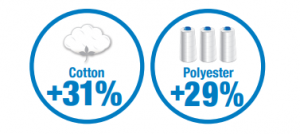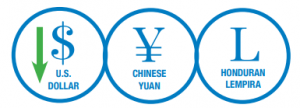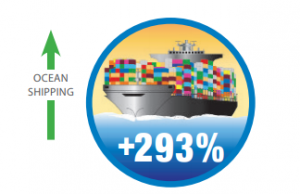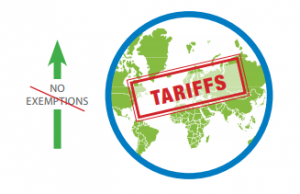

As insightful and excellent planners, we’ve made it our priority to stay current with new trends to ensure you, as our cherished clients, know what’s coming – so you plan and prepare your purchases with that in mind.
With the changes we’ve all experienced, we think it’s safe to say that one way or another we have been tested on how to efficiently work together. At Summit, we’ve experienced the shift of working remotely while still ensuring we meet your needs. We understand that when shopping for gift and rewards for the people important to your organization, the production process of those pieces, isn’t likely at the top of your mind. That’s why we’re here to give you the inside scoop on the not-so-obvious impact of the last year.
Our supply chain includes farmers, yarn spinners, textile manufacturers, cut-and-sew factories, plastics suppliers, cardboard suppliers, and decorators – here and abroad. This intricate supply chain is knit together by a complex and highly interdependent transportation and logistics infrastructure. By working alongside these different networks, we can gain the best insight on fluctuations throughout the industry.
To put it simply: costs are rising.
Let us help paint the picture of the factors that drive cost increases in the global apparel supply chain.
Cotton alone has increased an average of 31% year-over-year. Like any commodity, these prices are driven by supply and demand. Supplies have been dramatically reduced by the prohibition of Xinjiang cotton. There’s also been an increase in polyester demands, as well as plastics, and other silicates.

Over time, the U.S dollar has weakened against many global currencies, including the Chinese Yuan and Honduran Lempira. Brands in the United States are paying these global vendors in dollars. Vendors are paying their own workers and suppliers in their country’s local currencies. When the dollar was strong, they were making more locally and now that the dollar has weakened, they are earning less.

Costs for transporting goods across the ocean has spiked drastically! 293% increase year-over-year to be exact.

In the last few years, to avoid the Section 301 tariffs, many bag manufacturers have moved their product out of China – moving them to the Philippines and Indonesia, allowing the benefit of the GSP duty exemption. This expired at the end of last year. There currently isn’t new timing on when the GSP might be renewed.

As your partner, we want to let you know that many in our supply chain saw this coming and therefore brought in deep inventory, however as time marches on and the world reopens, events start to take place, and business looks to resume, that inventory is depleting and prices conitnue to rise. All that to say, if you have the ability, buy now for better pricing and inventory. We have warehouses to hold inventory, if need be, so give us a call and let’s work together to get you ready for what’s next.
Think we might be worthy of a conversation? We'd love to hear what you have in mind.
By clicking Send you indicate you have an existing relationship with the recipient.